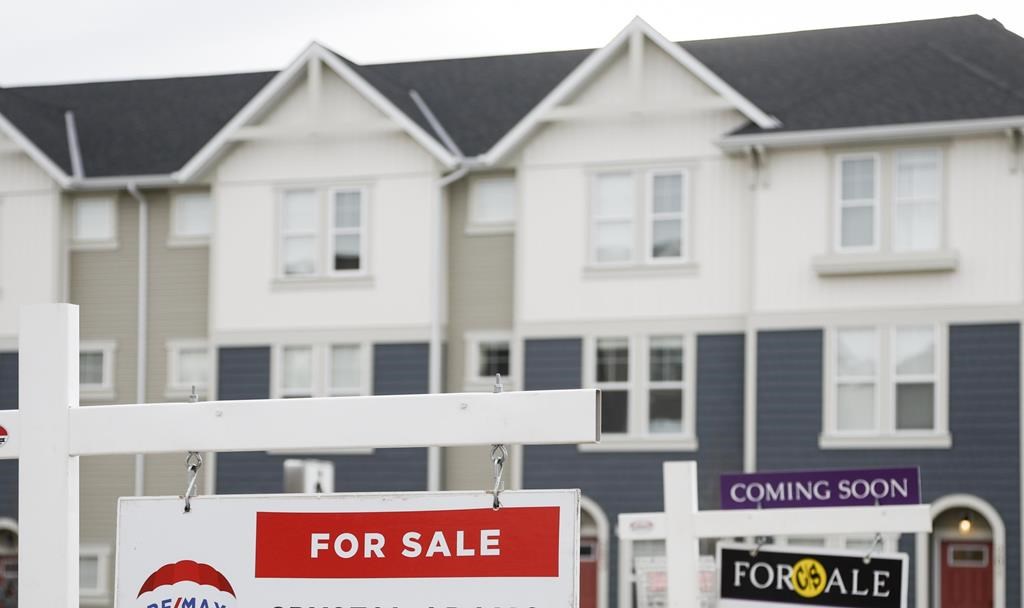Canada’s national housing agency says Hamilton was off some 12 per cent month to month in the seasonally adjusted annualized rate (SAAR) of housing starts in September.

Data from the Canada Mortgage and Housing Corporation (CMHC) released Wednesday says the city checked in at just over 2,300, down from the 2,678 starts recorded in August.
Single-detached starts in Hamilton continued to fluctuate, with the numbers doubling to just under 350 compared with August, but down almost two-thirds from what they were in the same month last year.
Both Ontario and Canada were also up month to month, with the province’s starts rising 24 per cent to 98,801 for September.
The country climbed eight per cent to 270,466 units from a revised 250,383 units in August.
CMHC chief economist Bob Dugan said activity in multi-unit starts maintained similar levels to 2022 despite the higher interest rate environment. He says that appeared to help offset double-digit declines in single-detached starts in all provinces.
“In fact, September was the second highest month this year for multi-unit starts,” Dugan said.
“It seems the current higher interest rate environment has not yet had the expected negative impact on multi-unit construction activity so far in 2023.”
Hamilton's expensive housing driving young talent and families away: report
The lack of family-friendly homes and high housing prices in Hamilton is having an effect on retaining talented, young people in the community, according to a policy think tank.
The Smart Prosperity Institute report from last May, revisited by city hall’s planning committee Tuesday, submitted that city is becoming less attractive to families and losing thousands annually to neighbouring regions, like Brantford and St. Catharines.
“For Hamilton to thrive, it needs to attract and retain talent, from high-tech positions like software engineers to the healthcare workers needed to care for an aging population to the tradespeople needed to build the homes for those workers,” the report stated.
Mike Moffatt, one of the authors of the study, notes that Hamilton is good at attracting young workers as they start their careers, but once they start families, they leave to find attainable housing that meets their needs.
The study, which predominantly used Statistics Canada migration data from the last 15 years, showed that in 2020-21 Hamilton saw an outmigration almost as high as the number of people who came to the city.
- U.K. bans generic passwords over cybersecurity concerns. Should Canada be next?
- More foreign interference action coming after inquiry report, India arrests: LeBlanc
- Some 2019 candidates ‘appeared willing’ to engage with foreign interference: Hogue inquiry
- Princess Anne to help commission new navy vessel in B.C. ceremony
“The risk for Hamilton is that it essentially becomes a farm team for talent for the rest of southwestern Ontario,” Moffat said.

He suggests it could pose problems for some of the more critical jobs in the city, like health care, where workers in the field might opt to find employment within their own communities as opposed to commuting to Hamilton.
The knock-on effect would be a need for Hamilton institutions and businesses to offer higher wages, essentially creating a “payroll tax” for employers to keep talent.
Since 2022, CHMC data reveals that the city’s housing starts have dipped and are below targets despite developer approvals exceeding the city’s housing goals.
So far in 2023, the city has approved some 12,500 building permits, which is close to three and a half times the city’s targets.
Moffat suggested to councillors that reaching out to developers and asking why they haven’t been building may help with lobbying the province for changes in policies that restrict the density of certain developments.
He says a high proportion of family-friendly dwellings of three or more bedrooms in all forms of builds would help.
More “super seniors” housing, for residents 80 and up, is also needed, which in turn potentially frees up a supply of large homes for families.
“Seniors would like to be able to downsize but can’t find anything appropriate for them in the neighbourhoods they wish to live in,” Moffat explained.
Hamilton home sales slipped 17% in September compared with last year: RAHB
Hamilton’s realtors reported a drop in total home sales year over year in September, with just 373 in the city, down from 501 last month and a 17 per cent decline compared with last year.
The Realtors Association of Hamilton-Burlington (RAHB) said activity hasn’t been this slow since 2010, revealing its sales-to-new listings ratio fell to 29 per cent, driving gains in inventory.
“Slower sales and increased inventory caused the months of supply to jump from under three months in August to nearly five months in September,” RAHB president Nicolas von Bredow said.
“The sudden shift in conditions is taking some pressure off home prices.”
The benchmark price of a detached home in the city was up two per cent year over year to $848,000, while the price of an apartment-style dwelling slipped seven per cent to just over $494,000.
The most expensive homes in the city are found in Ancaster, Waterdown and Flamborough, checking in at just over $1 million, while the cheapest are in Hamilton Centre, averaging close to $572,000.


Comments